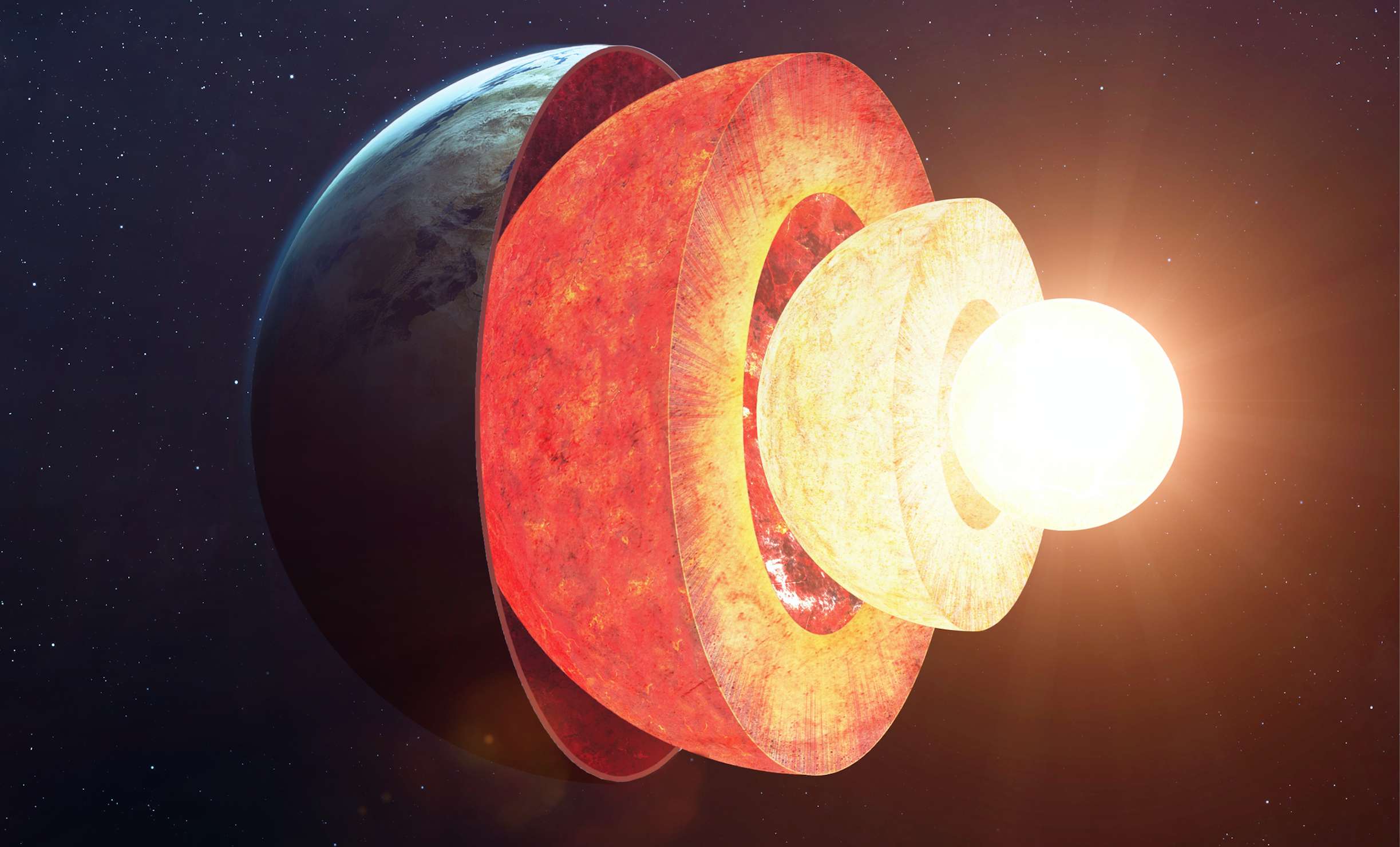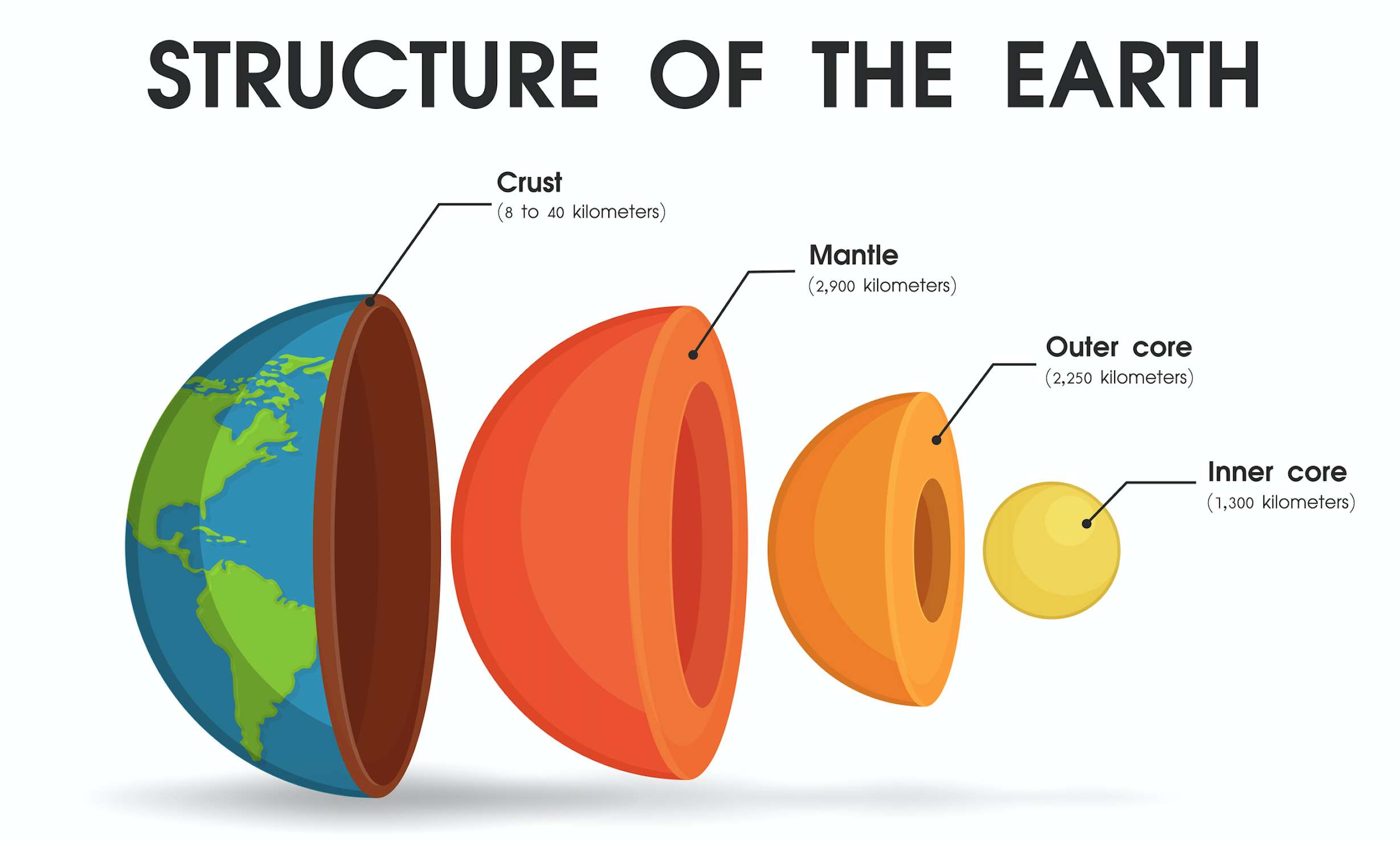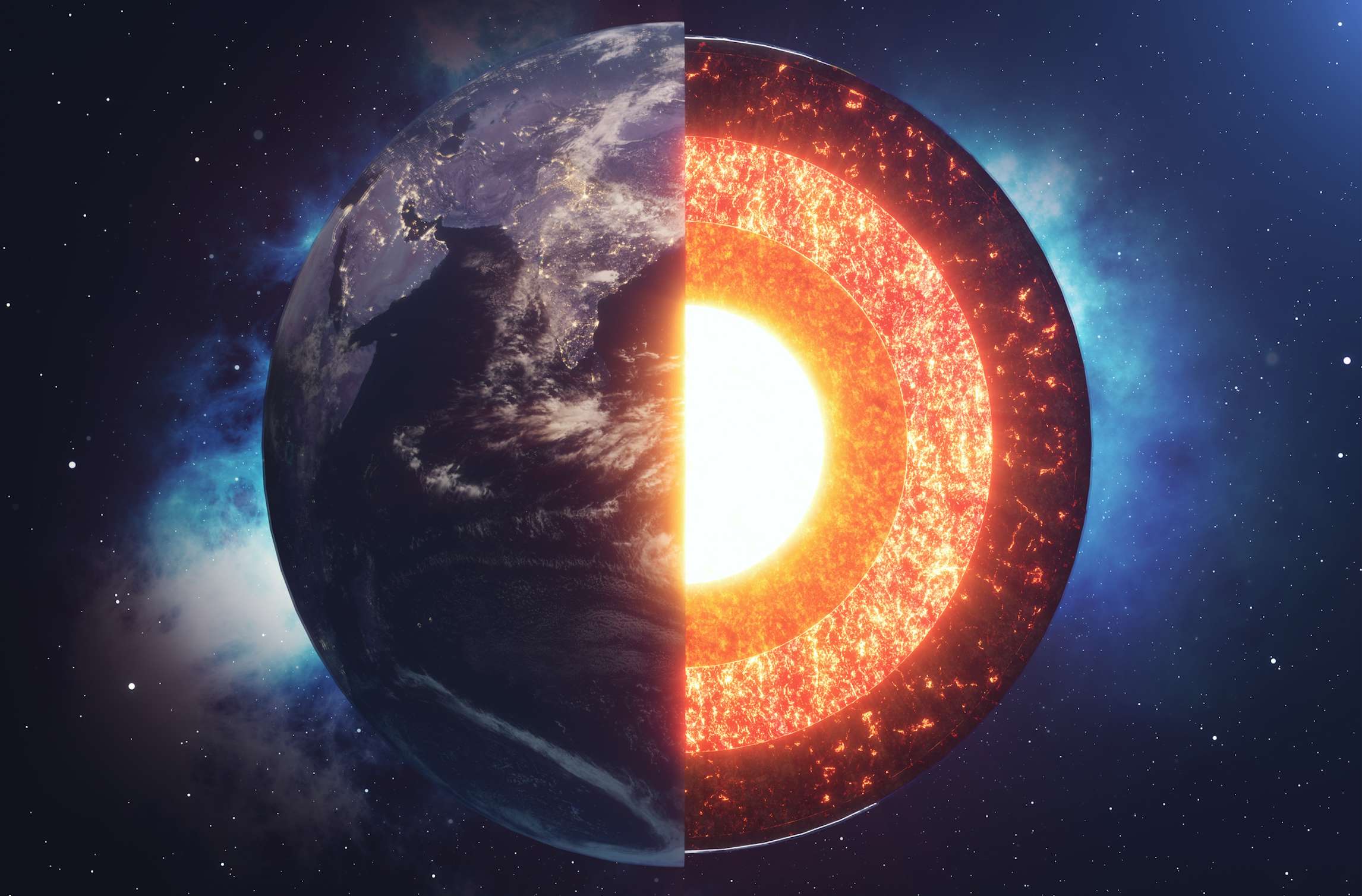Create a free profile to get unlimited access to exclusive videos, sweepstakes, and more!
New study reveals Earth's hidden inner core and suggests a mystery cooling event

We all recall the plaster cutaway models of the Earth in grammar school science class, with slices of our planet broken down into the simple components of crust, mantle, outer core, and inner core.
In a revelation that could cause those older visual aids to become obsolete, scientists with the Australian National University have detected a possible fifth layer, a secret inner sphere, that has remained obscured until now.
Their findings, suggesting that this inner inner core might indicate a second, extreme cooling event sometime in our world's past, are detailed in a new study recently published at the online scientific site, Journal of Geophysical Research: Solid Earth.
Dr. Joanne Stephenson, lead author and PhD researcher in the Research School of Earth Sciences at the Australian National University explained that investigating the structure of the inner core can aid in understanding more about the Earth’s history and evolution.
“Traditionally we’ve been taught the Earth has four main layers: the crust, the mantle, the outer core and the inner core," she said in a University press release. "The idea of another distinct layer was proposed a couple of decades ago, but the data has been very unclear.”
In stark contrast to Earth's mineral-based crust and mantle, the hot inner core is comprised almost completely of solid iron and nickel and spans an area of roughly 800 miles in diameter. Its different spin rate, as compared to the surface of the planet, is believed by scientists to be the origins of our powerful magnetic field that protects us from dangerous space radiation.
This ball-shaped metallic heart is also surrounded by the liquid outer core, which is formed by a nickel-iron alloy some 1,355 miles thick.
Earth’s fast-spinning inner core has remained somewhat of a mystery to geologists and planetary scientists, even when adding in the cumulative studies offered up in research studies presented by the fields of seismology, geodynamics, mineral physics, and materials science. This scorching, metal-base center represents only 1 percent of our planet's entire volume and is a key to learning more regarding Earth's thermal dynamics and evolution.
For the study, Dr. Stephenson and her team from the Australian National University, Professor Hrvoje Tkalčić and Professor Malcolm Sambridge, employed seismic info from the comprehensive database at the International Seismological Centre and applied it to the "nearest neighbour algorithm," which measures the spread or distribution of something across a geographical space.
It seems that this innermost inner core features iron crystals that are oriented in an east-to-west direction, different than the inner core which has similar crystals that point in a north-to-south direction.
Dr. Stephenson admits that this new layer, roughly 400 miles from the center of the Earth, is not easy to observe and required some unique mathematical gymnastics to detect.
“We got around this by using a very clever search algorithm to trawl through thousands of the models of the inner core,” Dr. Stephenson added. “It’s very exciting — and might mean we have to re-write the textbooks!
"We found evidence that may indicate a change in the structure of iron, which suggests perhaps two separate cooling events in Earth’s history. The details of this big event are still a bit of a mystery, but we’ve added another piece of the puzzle when it comes to our knowledge of the Earth’s inner core.”
















